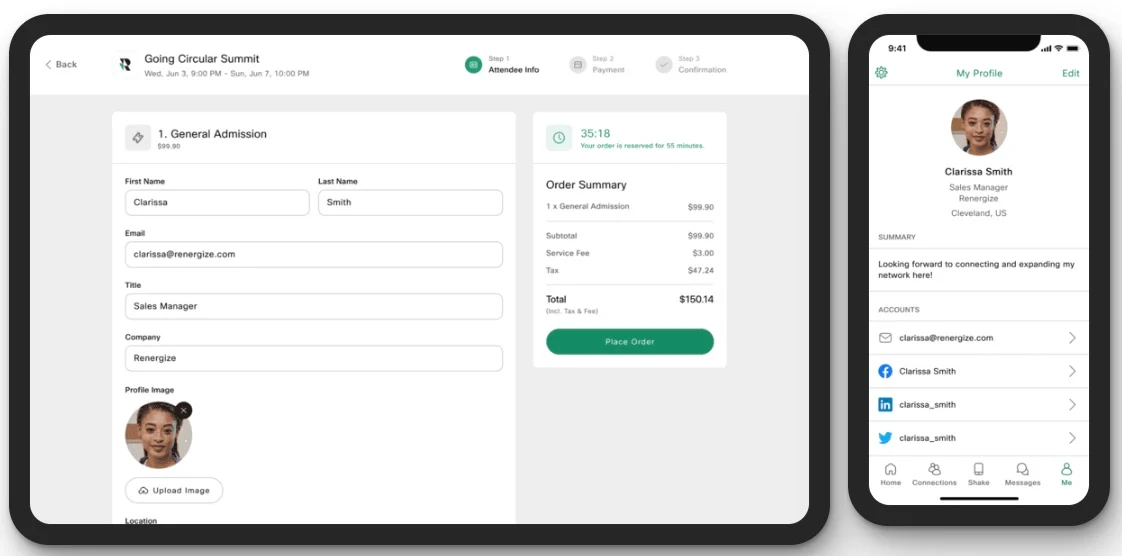Microsoft Teams is one of the most popular team collaboration and communication tools available. It’s a robust platform that allows for remote collaboration, calendar management, videoconferencing, and seamless integration with other Microsoft 365 products.
Whether you’re coordinating a small team or managing a large-scale operation, understanding the Microsoft Teams pricing structure can help you make the most of its extensive features without going over budget.
Teams offers flexible pricing plans for a wide range of businesses — from small startups seeking basic communications tools to large enterprises in need of advanced security and collaboration features.
An introduction to Microsoft Teams
Microsoft Teams is a collaboration and communication platform that offers chat, videoconferencing, audio and video calls, file sharing, and integrations with a host of apps and platforms, among other features. It’s a core part of the Microsoft 365 product suite of office tools.
Launched in 2017, Teams has rapidly grown to become a go-to solution for over 300 million monthly active users worldwide. This success is driven by the platform’s ability to help teams talk to each other and work together, no matter where they’re located.
It serves as a centralized hub for teamwork, allowing users to connect, share, and collaborate in real time. With features like screen sharing, file storage, and integrations with 365 products and third-party apps, Teams is designed to enhance productivity for both in-office and remote work setups.
Microsoft Teams pricing
Microsoft Teams offers several pricing tiers tailored to various business needs:
- Free plan: Ideal for small teams, this plan offers team chats, 60-minute group meetings, and 5 GB of file storage per user.
- Microsoft Teams Essentials: At $4.80 per user, per month or $48 per user, per year, this plan offers extended meeting durations of up to 30 hours, whiteboarding, meeting recordings, and 10 GB of storage per user.
- Microsoft Teams Enterprise: This plan costs $6.30 per user, per month or $63 per user, per year and offers unlimited chat and meetings, 10 GB of storage per user, and more.
- Microsoft 365 Business Basic: Priced at $7.20 per user, per month or $72 per user, per year, this plan includes user management for up to 300 employees, access to other Microsoft 365 apps — including web versions of Word, Excel, PowerPoint, and Outlook — and 1 TB of storage per user.
- Microsoft 365 Business Standard: Available for $15 per user, per month or $150 per user, per year, this plan offers webinars and desktop versions of Microsoft 365 apps.
- Microsoft 365 Business Premium: This plan costs $26.40 per user, per month or $264 per user, per year and includes everything in the Business Standard plan along with additional access controls and security features.
Teams also offers “home” plans focused on personal needs.
Microsoft Teams vs alternatives
Microsoft Teams is a leading collaboration app, but there are alternatives that also fit many businesses’ needs. To help you decide whether or not Microsoft Teams is the best fit for your organization, see how its pricing compares to four other options:
1. Slack
Slack is a widely used alternative to Microsoft Teams, known for its user-friendly interface and extensive third-party app integrations. Its core product offering is a workspace with communication channels you can use to organize conversations by teams, topics, and projects. It also supports audio and video meetings, workflows, collaborative documents, and more.
- Pricing: Slack offers a free plan with basic features. Paid plans include Pro ($8.75 per user, per month or $87 per user, per year), Business+ ($15 per user, per month or $150 per user, per year), and a custom Enterprise Grid option.
- Features: Slack offers an intuitive team communication interface, audio and video meetings, chat functions, file sharing, and customizable workflows. However, it lacks the built-in office productivity tools Teams offers.
- A reason you might choose Teams: Microsoft Teams is included with Microsoft 365 plans that many businesses are already subscribed to. It integrates with other 365 apps, like Word, Excel, and PowerPoint, providing a more unified experience for businesses already using these products.
If you’re deciding between Microsoft and Slack, check out our Microsoft Teams vs Slack deep dive.
2. Zoom
Zoom is a leader in videoconferencing, with high-quality video and audio capabilities that support meetings, webinars, and virtual events.
- Pricing: Zoom’s free plan allows for meetings up to 40 minutes with limited participants. Its Pro plan is $15.99 per user, per month or $159.84 per user, per year. Its Business plan is $21.99 per user, per month or $219.84 per user, per year. Various paid add-ons for features like whiteboards, caption translations, and cloud storage are also available.
- Features: Zoom’s strengths lie in its robust videoconferencing features, including breakout rooms, recording capabilities, and virtual backgrounds. However, it lacks the communication and collaboration tools that Teams offers.
- A reason you might choose Teams: Microsoft Teams combines video meetings with collaboration tools like shared calendars, file storage, and communication channels, creating a more comprehensive platform for team collaboration and project management.
3. Google Meet
Google Meet, part of the Google Workspace product suite, is another strong competitor in the videoconferencing space, known for its simplicity and integration with other Google apps.
- Pricing: Google Meet’s free plan includes 60-minute meetings for up to 100 participants. Google Workspace plans include Business Starter ($7.20 per user, per month or $72 per user, per year), Business Standard ($14.40 per user, per month or $144 per user, per year), Business Plus ($21.60 per user, per month or $216 per user, per year), and an Enterprise plan with custom pricing.
- Features: Google Meet excels at easy video meeting hosting and scheduling via Google Calendar. It also has handy features for accessibility and meeting experience improvement, like background noise cancellation and live captioning. However, it lacks valuable features that Teams offers, like saved meeting chats.
- A reason you might choose Teams: Teams offers a more robust videoconferencing solution, combining video meetings and chats with deep integration with Microsoft Office apps that many businesses rely on daily.
4. Webex
Webex by Cisco is another powerful platform, particularly popular in enterprise environments that prioritize security. It’s intended to be a full collaboration suite that supports webinars, meetings, and messaging.
- Pricing: Webex offers a free plan with basic features. Its paid plans include Webex Meet ($12 per user, per month or $144 per user, per year), Webex Suite ($22.50 per user, per month or $270 per user, per year), and Webex Enterprise with custom pricing.
- Features: Webex stands out for its security protocols, AI-powered features like discussion summaries and translations, and advanced meeting capabilities. However, its user interface can be complex compared to Teams.
- A reason you might choose Teams: Teams provides a more streamlined user experience, particularly for those already using Microsoft’s suite of productivity tools, making it easier to manage all communication in one place.
Jotform’s integration with Microsoft Teams
If you’re set on choosing Microsoft Teams for your business and your work also relies on online forms, documents, and data collection, consider using Jotform’s Teams integration to streamline the process of reviewing form submissions, monitoring signature collection, scheduling meetings, and organizing data.
Jotform’s Microsoft Teams integration lets you automatically send form submissions to specific Teams chats and channels. You can even have meeting or appointment form submissions automatically trigger the creation of Teams calendar events.
Here’s a quick overview of the features:
- Send a message to a standard channel. Keep your team informed in real time with updates sent directly to your Teams channels.
- Send a message to a private channel. Ensure sensitive or specific information reaches only the eyes that need to see it.
- Send a chat message. Notify individuals instantly with automated chat messages based on certain form actions.
- Create a meeting. Automatically schedule meetings when certain conditions are met, saving time and reducing the manual work of calendar management.
Jotform’s Microsoft Teams integration can streamline communication, reduce manual tasks, and keep everyone on the same page. This enhances productivity across your entire organization and turns Teams into an even more useful collaboration tool.
If you’re ready to try the integration out, learn more about how to combine Microsoft Teams and Jotform today.
Photo by Mikael Blomkvist







































Send Comment: